This post may contain affiliate links. Please read our disclosure policy.
Learn how to easily prepare pen cai / poon choi to usher in Chinese New Year celebration. This big bowl of the decadent feast is layered with delicious and premium ingredients. This tutorial is to show you how you can easily prepare this at home without feeling overwhelmed.
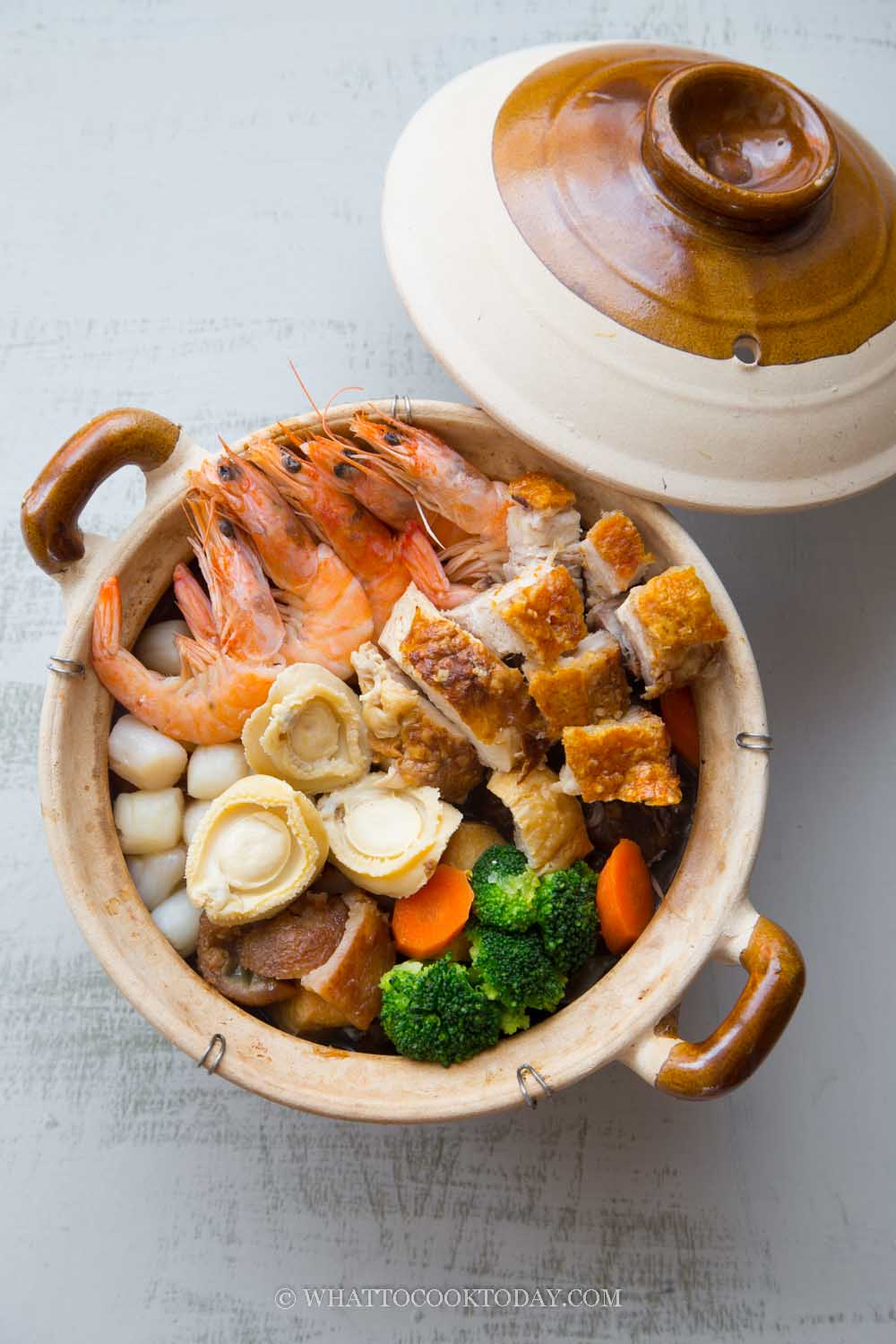
What is pen cai ?
Pen Cai (in Mandarin) or Poon Choi (in Cantonese) is originated from the late Song Dynasty. It was served in a large wooden washbasin filled with all the best ingredients possible, mostly seafood and meat. As seafood and meat are considered valuable compared to vegetables back in the day. The ingredients are not just thrown in there. As a matter of fact, each ingredient is carefully layered and eaten layer by layer instead of stirring everything up and eaten together. This practice was adopted by the people in Southern China when they first settle in a new territory. Pen cai was served when there are events like wedding, festivals, worship of ancestors, the birth of a baby boy, or any communal celebrations. It is a huge dish meant to be shared with others. In the 90s,pen cai started to get popular and served in restaurants in Hong Kong. It was heavily publicized and then now it is popular in Singapore and Malaysia. I never knew about this dish when I was in Indonesia until I lived in Singapore for a few years.
The symbolic meaning of pen cai
Pen cai symbolizes unity, equality, harmony, and prosperity. This feast is meant to be shared, regardless of social status. Cooking pen cai requires team work back in the day. It took a few days to prepare such a feast as the community will need to gather ingredients from different places, and hence the unity! There are so many ingredients in this one bowl, yet each one contributes to the overall great taste of pen cai (harmony)
Common ingredients in pen cai
You can use any of the following or anything I don’t mention here that you like to eat. Really, it can be made as fancy as you like or with whatever ingredients you have.
1. Seafood
Abalone, sea cucumber, prawns, scallop, fish maw
2. Meat
Roast duck, roast pork, roast chicken, pork skin
3. Meatless protein
Beancurd sheet, fried tofu puffs
4. Vegetables
Napa cabbage, carrot, mushrooms, broccoli, daikon
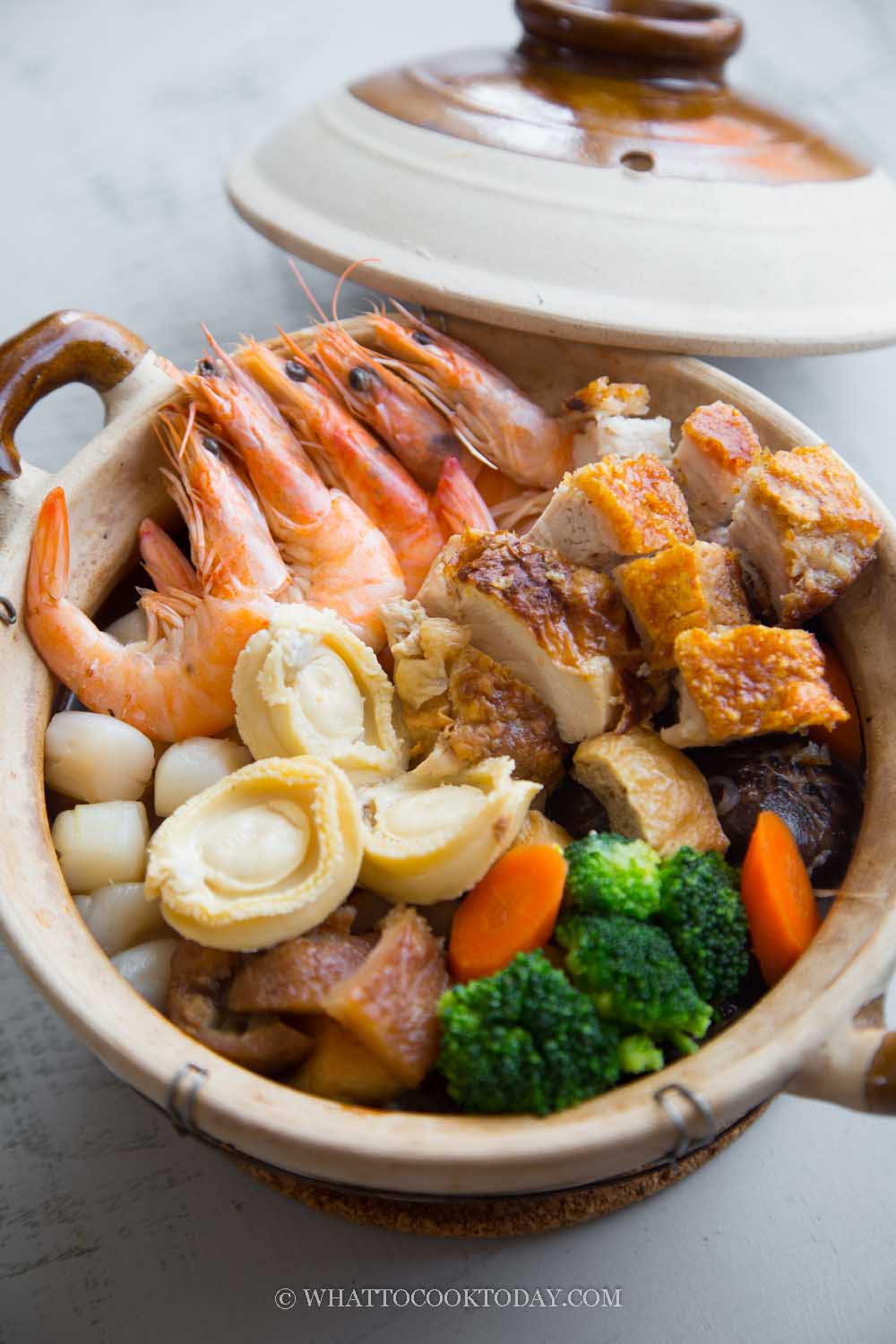
How to layer pen cai
Pen cai is served in a large washbasin in the old days. In the modern-day, pen cai is prepared in large claypot or a heavy-bottom pot like Dutch oven. Ingredients are arranged layer by layer. Please note that this is just a suggestion and nothing is written in stone. You can layer it however you want it. This is just the basics and I don’t think there’s right or wrong here. You will see some people even put vegetables on top.
1. Bottom layer
Starting from vegetables and meatless protein such as napa cabbage, daikon
2. Middle layer
Fried tofu puffs, tau kwa, beancurd sheets, mushrooms. Meat and poultry can go to this layer too
3. Top layer
Abalone, sea cucumber, prawns, scallop, fish maw, roast pork, roast duck
4. The sauce
The sauce is then poured over the ingredients
How to prepare easy pen cai at home
1. Sea cucumber needs to be rehydrated and boil/pressure cooked. Use pointy scissors to cut through the back of the prawns to remove the veins. Leave the head and shells intact. Set aside
2. Bring a medium pot of water to a boil. If you have a slotted basket, put the abalone and reheat for 3-4 seconds (canned abalones are cooked) and then set aside. Next, put the scallops in the basket and cook for a few seconds. Do not overcook. Next, put the shrimp in the boiling water and cook for about a minute or so or until they turn pink and cooked through. Remove and set aside



3. Bring a small pot of water to a boil. Blanch the broccoli and carrots for 2-3 minutes and then refresh with ice-cold water.

4. Pour the chicken broth into a large clay pot or heavy-bottom pot such as a Dutch oven if you don’t use a clay pot

5. Add the napa cabbage and daikon and simmer for about 10 minutes until they are soft

6. Then layer the mushrooms, fried tofu puffs, sea cucumber slices, and pork skin. Bring to a simmer and then cover to let it simmer for another 10 minutes. These are all absorbent ingredients that will soak up the broth nicely. Then lower the heat to the lowest to keep it warm

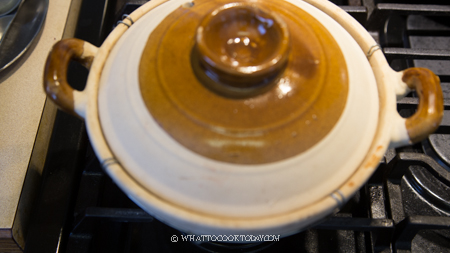

7. Prepare the sauce by bringing the broth to a boil, then add the oyster sauce, wine, and sugar. Lower the heat to let it simmer for about 3 minutes. Mix the cornstarch with water and as you stir the broth, pour the cornstarch solution and keep stirring until the sauce thickens. Keep it warm at the lowest heat

8. Finish up by layering the final layer with prawns, abalone, broccoli florets, carrots, roast pork, and scallops.

9. Pour the thickened sauce over everything and serve immediately
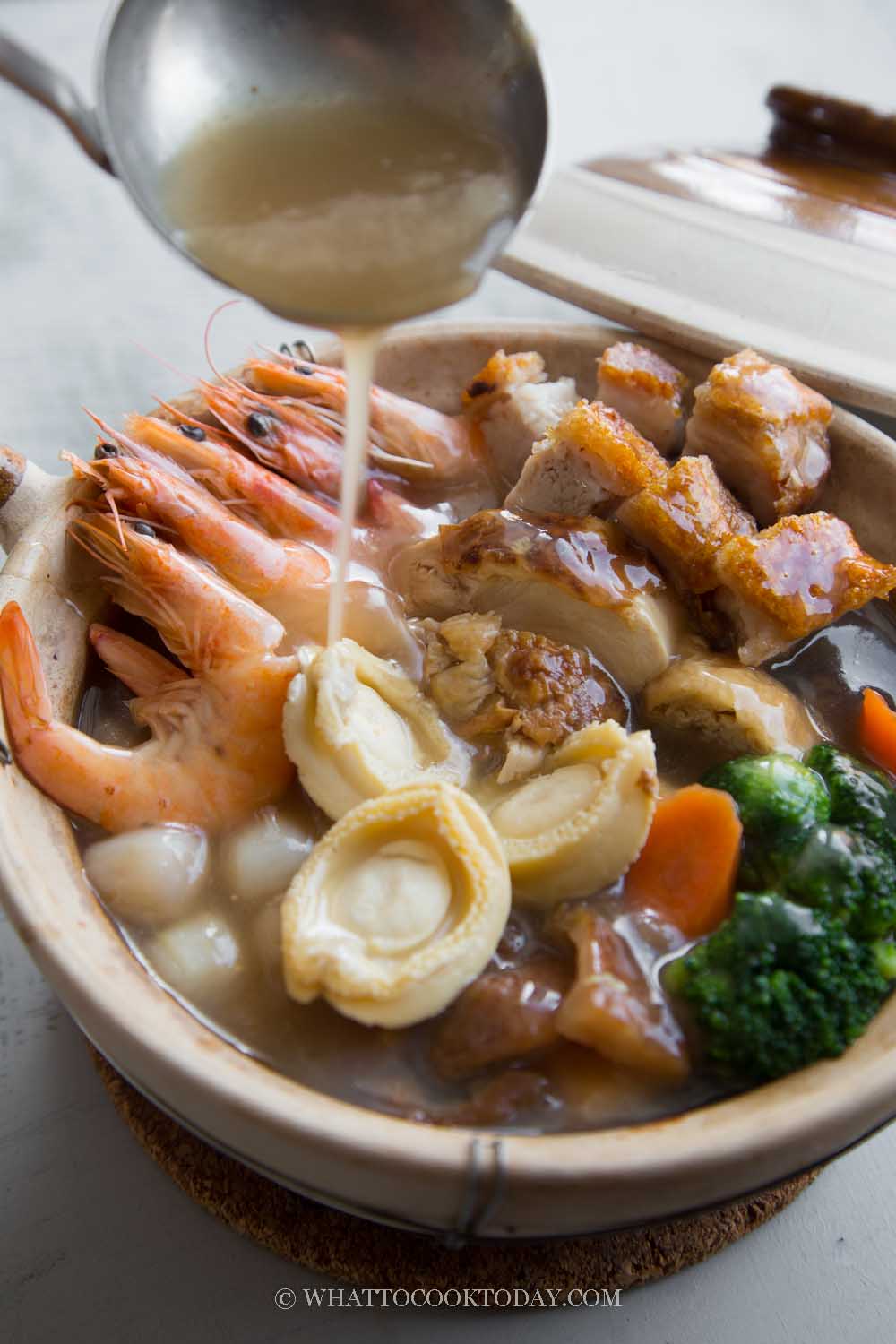
It’s easier than you think
Pen cai may seem so elaborate with the list of ingredients, but honestly, they don’t require much “cooking”. Unlike back in the super old days where pen cai take days to prepare, we are lucky we can just gather ingredients from the store. For ingredients like roast pork/siu yuk, roast duck, roast chicken, you can always get them from your favorite Chinese restaurant or grocery store.
Did you make this recipe?
I love it when you guys snap a photo and tag to show me what you’ve made 🙂 Simply tag me @WhatToCookToday #WhatToCookToday on Instagram and I’ll be sure to stop by and take a peek for real!
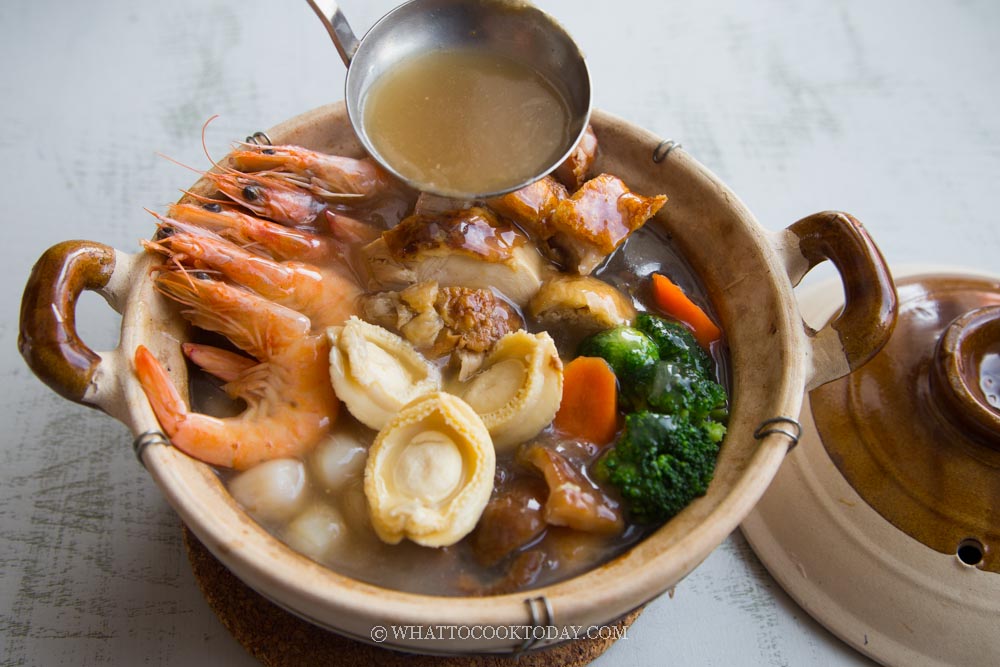
Easy Lunar New Year Pen Cai 盆菜
Ingredients
Seafood:
- 1 can baby abalone save the broth
- 150 gr sea cucumber
- 10 large prawn with head and shells in tact
- 20 small scallops see notes
Meat:
- 200 gr siu yuk store-bought or homemade
- 200 gr roast chicken/duck store-bought or homemade
Meatless protein:
- 80 gr fried tofu puffs
- 50 gr pork skin I bought blanched pork skin, cut into strips
Vegetables:
- 200 gr daikon cut into 1/2-inch slices
- 5 broccoli florets
- 1 small carrot sliced at angle
- 6 shiitake mushrooms
- 4 napa cabbage leaves cut into large chunks
Soup base:
- 300 ml chicken stock
Sauce:
- 240 ml chicken stock
- 1 Tbsp cooking wine
- 1 Tbsp oyster sauce
- ½ tsp sugar
- 1 Tbsp cornstarch mixed with 1 Tbsp of water
Instructions
Prepare the seafood:
- Sea cucumber needs to be rehydrated and boil/pressure cooked. Use pointy scissors to cut through the back of the prawns to remove the veins. Leave the head and shells intact. Set aside
- Bring a medium pot of water to a boil. If you have a slotted basket, put the abalone and reheat for 3-4 seconds (canned abalones are cooked) and then set aside. Next put the scallops in the basket and cook for a few seconds. Do not overcook. Next, put the shrimp in the boiling water and cook for about a minute or so or until they turn pink and cooked through. Remove and set aside
Prepare the vegetables:
- If you use dried shiitake mushrooms, soak them in warm water until soften and plump
- Bring a small pot of water to a boil. Blanch the broccoli and carrots for 2-3 minutes and then refresh with ice-cold water.
Prepare the broth:
- Pour the chicken broth into a large clay pot or heavy-bottom pot such as a Dutch oven if you don't use a clay pot. Add the napa cabbage and daikon and simmer for about 10 minutes until they are soft. Then layer the mushrooms, fried tofu puffs, sea cucumber slices, and pork skin. Bring to a simmer and then cover to let it simmer for another 10 minutes. These are all absorbent ingredients that will soak up the broth nicely. Lower the heat to the lowest to keep it warm while preparing the sauce
Prepare the sauce:
- Bring the broth to a boil, then add the oyster sauce, wine, and sugar. Lower the heat to let it simmer for about 3 minutes. Mix the cornstarch with water and as you stir the broth, pour the cornstarch solution and keep stirring until the sauce thickens. Keep it warm at the lowest heat
Finishing up:
- Finish up by layering the final layer with prawns, abalone, broccoli florets, carrots, roast pork, roast chicken, and scallops.
- Pour the thickened sauce over everything and serve immediately

